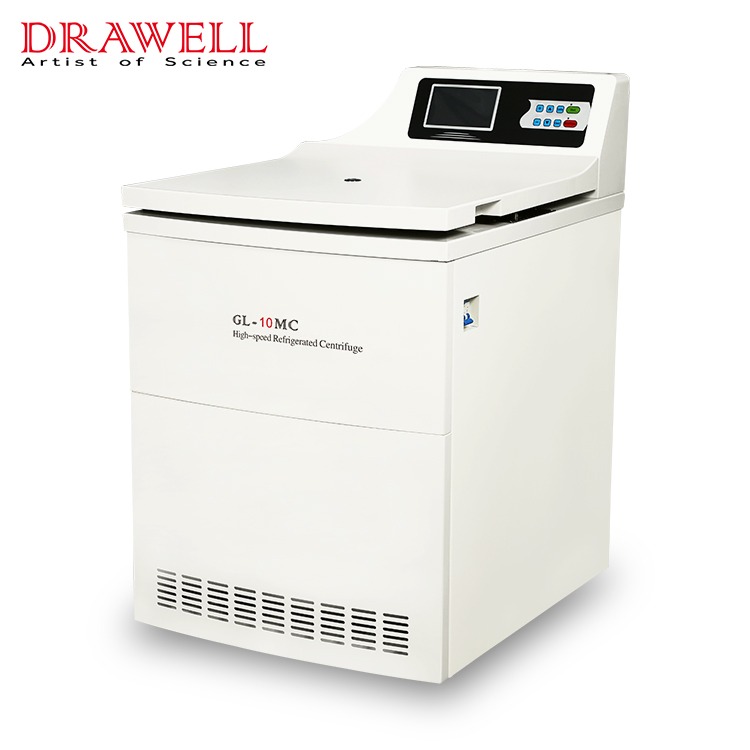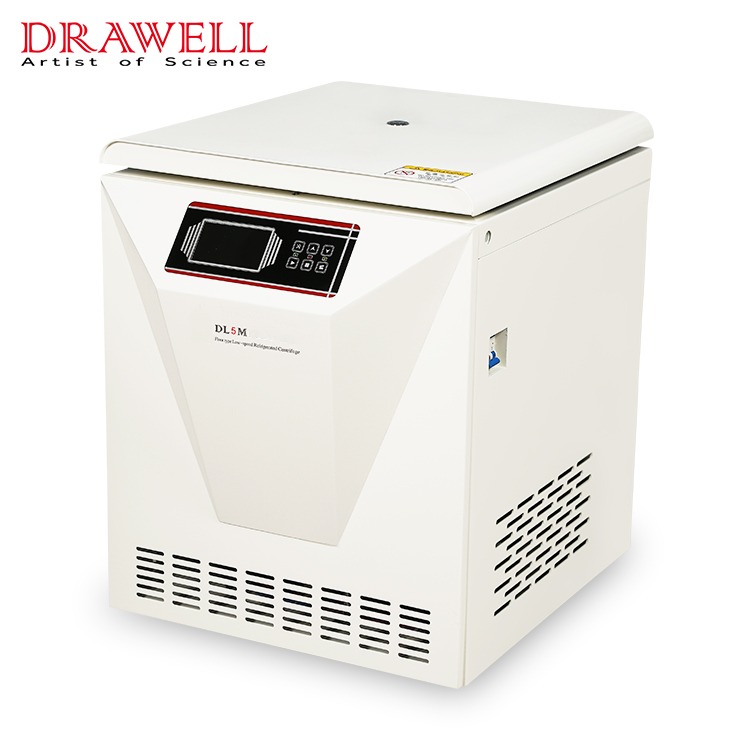High-speed centrifuges are pivotal in scientific research and industrial processes, enabling the efficient separation of particles based on their density. The latest advancements in centrifuge technology have significantly enhanced their speed and g-force capabilities, driving innovations across various fields. This article explores the advancements in high-speed centrifuges, focusing on their enhanced speed and g-force capabilities, and the impact of these improvements on various applications.
The Basics of Centrifugation
Centrifugation is a technique used to separate particles suspended in a liquid medium by spinning the sample at high speeds. The centrifugal force generated during this process causes particles to move outward, with heavier particles sedimenting faster than lighter ones. The speed of a centrifuge is measured in revolutions per minute (RPM), and the relative centrifugal force (RCF), commonly referred to as g-force, is expressed in terms of gravity (×g).

Key Factors Contributing to the Enhanced Speed Capabilities of High-speed Centrifuges
Over the years, the operational speeds of these centrifuges have seen remarkable advancements, driven by innovations in rotor design, materials science, and motor technology.
1. Rotor Design Innovations
Rotor design is fundamental to achieving higher centrifuge speeds. Recent advancements in this area have focused on optimizing the aerodynamic and structural properties of rotors.
Aerodynamic Optimization
- Computer Modeling: Advanced computational techniques allow for precise simulations of airflow and stress distribution around the rotor. This helps in designing shapes that minimize air resistance, reducing energy loss and enabling higher speeds.
- Streamlined Shapes: Optimized rotor shapes decrease turbulence and drag during rotation, contributing to more efficient operation at high speeds.
Structural Integrity
- Finite Element Analysis (FEA): This technique is used to predict how the rotor will react to various forces, identifying potential points of failure and enabling the design of stronger, more resilient rotors.
- Stress Distribution: Improved designs ensure even stress distribution across the rotor, preventing weak points that could lead to failure at high speeds.
2. Advances in Materials Science
The development and application of advanced materials have significantly enhanced the speed capabilities of high-speed centrifuges. These materials offer a combination of high strength, low weight, and durability.
Carbon Fiber
- High Strength-to-Weight Ratio: Carbon fiber composites provide exceptional strength while being much lighter than traditional materials like steel. This reduces the centrifugal force on the rotor, allowing for higher speeds.
- Durability: Carbon fiber is resistant to fatigue and corrosion, ensuring long-term stability and safety during high-speed operation.
Titanium
- Robustness: Titanium offers high tensile strength and excellent resistance to stress and corrosion, making it ideal for high-speed applications.
- Weight Efficiency: Although heavier than carbon fiber, titanium is significantly lighter than steel, providing a good balance between strength and weight.
Composite Materials
- Hybrid Composites: The use of hybrid materials that combine the benefits of carbon fiber, titanium, and other advanced composites enhances rotor performance, enabling higher operational speeds.
3. Motor Technology Developments
The motors that drive high-speed centrifuges have also seen significant advancements, contributing to higher speed capabilities and greater operational efficiency.
Brushless DC Motors
- High Efficiency: Brushless DC motors offer higher efficiency compared to traditional brushed motors, reducing energy consumption and heat generation.
- Greater Torque: These motors provide higher torque, facilitating rapid acceleration to high speeds and maintaining stable operation.
Induction Motors
- Robust Performance: Induction motors are known for their robustness and reliability, making them suitable for the demanding conditions of high-speed centrifugation.
- Energy Efficiency: Advances in induction motor design have led to improved energy efficiency, further supporting high-speed operation.
Advanced Control Systems
- Real-Time Monitoring: Modern control systems continuously monitor motor performance, adjusting parameters to maintain optimal speed and stability.
- Automated Adjustments: These systems can automatically adjust motor settings to compensate for changes in load or environmental conditions, ensuring consistent high-speed performance.
Innovations in the G-force Capabilities of High-speed Centrifuges
1. Rotor Design and Balancing
- Precision Engineering: Modern rotor designs are crafted with extreme precision using advanced computer-aided design (CAD) tools. This ensures optimal aerodynamic properties and structural integrity, which are crucial for maintaining high g-forces.
- Dynamic Balancing: State-of-the-art dynamic balancing techniques are employed during rotor manufacturing to ensure even mass distribution. This reduces vibrations and mechanical stress, allowing the rotor to achieve and maintain higher g-forces.
2. Advanced Materials
- High-Strength Composites: The use of high-strength materials such as carbon fiber composites and titanium alloys has significantly increased the maximum g-force that rotors can withstand. These materials offer excellent strength-to-weight ratios, minimizing the stress on the rotor during high-speed operations.
- Durability and Fatigue Resistance: Enhanced materials also improve the durability and fatigue resistance of rotors, ensuring long-term stability and safety under high g-forces.
3. Improved Bearings
- Magnetic Bearings: Magnetic bearings reduce friction and wear by levitating the rotor, allowing for smoother operation at high g-forces. This technology minimizes mechanical contact, extending the lifespan of the centrifuge and enabling higher performance.
- Air Bearings: Similar to magnetic bearings, air bearings use a thin film of air to support the rotor, virtually eliminating friction. This facilitates the maintenance of high g-forces while reducing wear and energy consumption.
4. Enhanced Control Systems
- Real-Time Monitoring: Advanced control systems continuously monitor the operational parameters of the centrifuge, including speed, temperature, and rotor balance. Real-time adjustments ensure optimal performance and safety during high-g-force operations.
- Automated Feedback Mechanisms: These systems use automated feedback to dynamically adjust the rotor speed and other parameters, maintaining stability and maximizing g-force capabilities.
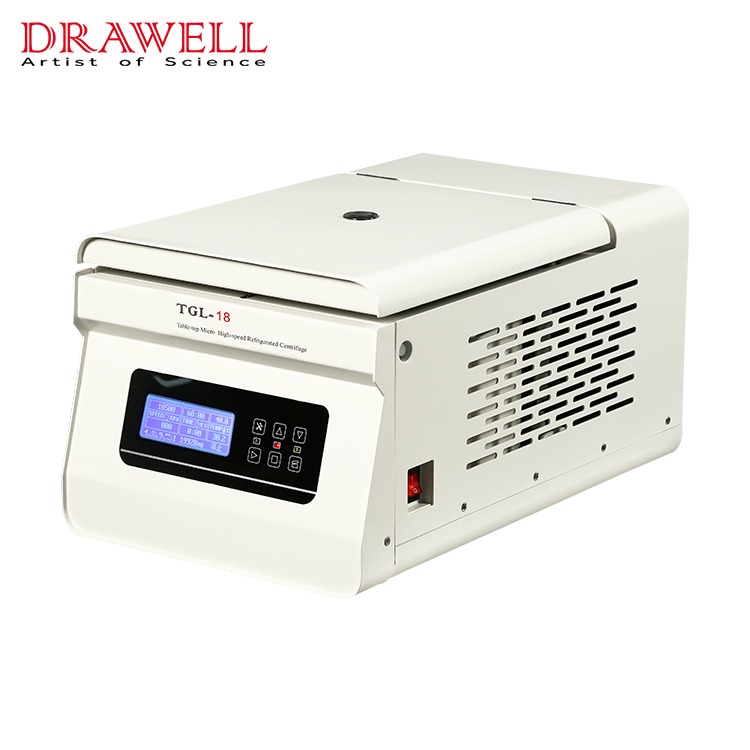
Impact of Enhanced Speed and G-force Capabilities in High-speed Centrifuges across Various Applications
This chart provides a concise overview of how advancements in high-speed centrifuge technology are impacting various fields and applications.
| Field | Application | Impact of Enhanced Speed and G-Force |
| Molecular Biology | Isolation and purification of nucleic acids, proteins, and cellular organelles | 1. Increased efficiency and yield 2. More precise and rapid analysis |
| Chemistry | Separation of reaction products, purification of compounds, and analysis of complex mixtures | 1. Faster and more efficient separations 2. Improved throughput and accuracy |
| Materials Science | Separation of nanoparticles, colloids, and fine particles | 1. Production of highly purified materials 2. Advances in nanotechnology and advanced materials |
| Clinical Diagnostics | Blood component separation, virus isolation | 1. Faster turnaround times 2. Enhanced accuracy and reliability of diagnostic tests |
| Pharmaceuticals | Drug formulation and purification | 1. Improved drug purity 2. Accelerated research and development processes |
| Environmental Science | Analysis of soil, water, and air samples | 1. More efficient pollutant and contaminant separation 2. Better environmental monitoring |
| Food and Beverage | Quality control, separation of ingredients | 1. Enhanced product quality 2. More efficient production processes |

Conclusion
The continuous technical advancements in speed and g-force capabilities of High-speed centrifuges, have revolutionized their applications in science and industry. These improvements have not only enhanced the efficiency and precision of separation processes but have also opened up new possibilities for research and development.

